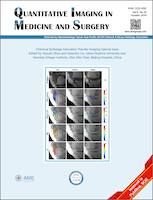
Quantitative Imaging in Medicine and Surgery
Scope & Guideline
Transforming Healthcare Through Cutting-edge Imaging Techniques
Introduction
Aims and Scopes
- Quantitative Imaging Techniques:
The journal emphasizes the use of various quantitative imaging modalities, including MRI, CT, PET, and ultrasound, to derive objective measurements that can aid in diagnosis, treatment planning, and monitoring of diseases. - Clinical Applications:
It publishes research that explores clinical applications of imaging techniques in various medical fields, including oncology, cardiology, neurology, and musculoskeletal disorders, highlighting how quantitative imaging can improve patient management. - Interdisciplinary Research:
The journal encourages interdisciplinary research that combines imaging with machine learning, artificial intelligence, and radiomics, showcasing innovative approaches to enhance diagnostic precision and treatment personalization. - Technological Innovations:
It highlights advancements in imaging technology and methodologies, including improvements in image reconstruction algorithms, contrast agents, and imaging protocols aimed at reducing radiation exposure and improving image quality. - Biomarker Development:
Research focusing on the development of imaging biomarkers for predicting disease progression, response to therapy, and patient outcomes is a key area of interest, aiming to integrate imaging with personalized medicine. - Surgical Imaging Integration:
The journal also emphasizes the role of imaging in surgical interventions, including preoperative planning and intraoperative guidance, demonstrating how quantitative imaging can enhance surgical precision and outcomes.
Trending and Emerging
- Artificial Intelligence and Machine Learning:
There is a growing emphasis on the application of AI and machine learning in imaging analysis, with studies focusing on automated segmentation, diagnosis, and predictive modeling enhancing the role of imaging in clinical decision-making. - Radiomics and Biomarker Development:
The trend towards radiomics—extracting large amounts of features from medical images—has gained momentum, with research focusing on correlating imaging features with genetic, histological, and clinical outcomes, leading to the development of imaging biomarkers. - Hybrid Imaging Techniques:
Hybrid imaging modalities, such as PET/MRI and PET/CT, are increasingly popular, allowing for complementary information that enhances diagnostic accuracy and offers insights into tumor biology and treatment response. - Patient-Specific Imaging Approaches:
There is a rising trend in personalized imaging strategies that tailor imaging techniques and analysis based on individual patient characteristics, improving the specificity and relevance of imaging findings. - Quantitative Assessment of Treatment Response:
The journal is increasingly publishing studies focused on quantitative imaging methods to assess treatment responses, particularly in oncology, where imaging biomarkers are used to predict therapeutic efficacy and guide treatment decisions. - Minimally Invasive Imaging Techniques:
Emerging studies are highlighting the role of minimally invasive imaging techniques, such as ultrasound-guided procedures and advanced endoscopic imaging, which are becoming essential in both diagnostic and therapeutic contexts.
Declining or Waning
- Conventional Imaging Techniques:
There is a noticeable decline in the publication of studies focused solely on conventional imaging techniques without quantitative analysis, as the field increasingly favors advanced imaging modalities that provide more objective and reproducible results. - Basic Imaging Studies:
Research that primarily describes basic imaging findings without a quantitative or comparative analysis has become less frequent, indicating a shift towards studies that provide deeper insights into imaging applications and outcomes. - Single Modality Studies:
There is a waning interest in studies that focus on single imaging modalities without exploring their integration with other technologies. The trend is moving towards multimodal imaging approaches that combine data from various sources for comprehensive analysis. - Historical Imaging Reviews:
While historical reviews of imaging techniques were once common, there has been a decline in such publications in favor of current and forward-looking research that focuses on innovative imaging solutions and their clinical applications.
Similar Journals

European Journal of Radiology Open
Bridging Gaps in Radiology Through Collaborative ResearchThe European Journal of Radiology Open, published by Elsevier, has established itself as a pivotal platform for disseminating high-quality research in the field of radiology, nuclear medicine, and imaging since its inception in 2014. This open access journal, holding a commendable Q2 ranking in the esteemed 2023 Scopus categorization, seeks to foster a collaborative environment where researchers, professionals, and students can share innovative findings and advancements. Operating under the E-ISSN 2352-0477, this journal contributes to the broader scientific discourse with a commitment to accessibility and transparency, ensuring that cutting-edge research is available to a global audience. The journal's dual focus on rigorous peer review and rapid publication processes underscores its importance within the academic community, aiming to empower professionals with the latest insights in the dynamic landscape of medical imaging.
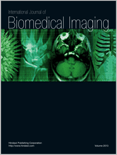
International Journal of Biomedical Imaging
Illuminating Pathways in Medical Imaging ResearchInternational Journal of Biomedical Imaging, published by HINDAWI LTD, stands as a pivotal resource in the field of biomedical imaging, bridging the gap between technological innovation and clinical application. Since its inception in 2006 as an Open Access journal, it has become accessible to a global audience, facilitating research dissemination and collaboration. The journal has garnered recognition within the academic community, achieving a notable Q2 category ranking in Radiology, Nuclear Medicine, and Imaging, with an impressive Scopus rank of 16 out of 333, placing it in the 95th percentile of its field. With coverage from 2006 to 2024, the journal encompasses a broad spectrum of studies focused on advancements in imaging technologies, methodologies, and clinical applications, making it an indispensable source for researchers, professionals, and students eager to stay at the forefront of biomedical imaging innovation.

JOURNAL OF DIGITAL IMAGING
Exploring the Intersection of Imaging and TechnologyJOURNAL OF DIGITAL IMAGING, published by Springer, is a premier journal dedicated to the field of digital imaging, encompassing significant developments in the intersecting disciplines of radiology, computer science applications, and ultrasound technology. With its impressive Q1 ranking in the categories of Radiology, Nuclear Medicine and Imaging, and Radiological and Ultrasound Technology, and a substantial Q2 ranking in Computer Science Applications, this journal is positioned at the forefront of research dissemination in these vital areas. The ISSN 0897-1889 and E-ISSN 1618-727X signify its broad reach and accessibility, while its Scopus rankings demonstrate its robust impact in the academic community, ranked #41/333 in Radiology and earning a notable 87th percentile status. Since its inception in 1988, the journal has served as a vital resource for researchers and professionals seeking to advance their understanding of digital imaging technologies and their applications. Although it does not currently offer open access options, it continues to foster scholarly dialogue and innovation, making it an indispensable platform for those committed to excellence in imaging science and technology.

EUROPEAN RADIOLOGY
Your Gateway to the Latest in RadiologyEUROPEAN RADIOLOGY, published by SPRINGER, stands as a prestigious international journal in the field of radiology, nuclear medicine, and imaging, with an impressive impact factor that underscores its significance among peers. With an ISSN of 0938-7994 and an E-ISSN of 1432-1084, this journal provides a platform for cutting-edge research and advancements in medical imaging from 1991 to 2024. Recognized as a Q1 journal in both general Medicine and the specialized Radiology category by 2023, EUROPEAN RADIOLOGY ranks an impressive #17 out of 333 in its field according to Scopus, placing it in the 95th percentile. While it does not currently offer Open Access options, the journal remains essential reading for researchers, professionals, and students striving to stay at the forefront of developments in diagnostic imaging and related technologies. By contributing to a comprehensive understanding of radiological practices, EUROPEAN RADIOLOGY plays a crucial role in shaping the future of medical diagnosis and patient care.
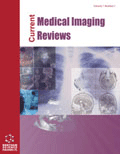
Current Medical Imaging
Bridging Technology and Patient Care in ImagingCurrent Medical Imaging is a reputable journal published by Bentham Science Publishers, specializing in the dynamic field of medical imaging, with a strong emphasis on both clinical applications and technological advancements. Established in 2007, the journal has made significant contributions to the fields of Internal Medicine and Radiology, consistently ranking in the Q3 quartile for these categories as of 2023. The journal's ISSN 1573-4056 and E-ISSN 1875-6603 ensure wide accessibility for scholarly communication, although it operates under a traditional access model. With its continuous publication from 2011 to 2024, Current Medical Imaging aims to bridge the gap between advanced imaging techniques and their practical application in patient care, making it indispensable for researchers, healthcare professionals, and students eager to stay at the forefront of innovations in imaging technology and clinical practice.
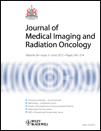
Journal of Medical Imaging and Radiation Oncology
Exploring New Horizons in Medical Imaging and Radiation TherapyJournal of Medical Imaging and Radiation Oncology, published by WILEY, is a pivotal resource in the fields of oncology and medical imaging. With an impact factor reflective of its commitment to advancing research, the journal has maintained a robust reputation since its inception in 2008 and continues to thrive through 2024. It is indexed with an insightful ranking, with a Q2 classification in Radiology, Nuclear Medicine and Imaging, affirming its importance in these disciplines. This journal not only serves as an open access platform, allowing extensive reach and accessibility, but also fosters a scholarly community dedicated to the innovation of imaging techniques and radiation oncology practices. As a key player in disseminating crucial findings and advancements, it appeals to researchers, clinicians, and students who aim to contribute to the evolving landscape of medical imaging and cancer treatment methodologies. The journal is based in Australia, at 111 River St, Hoboken, NJ, and invites submissions that push the boundaries of current knowledge in this critical area of healthcare.

Ultrasound Quarterly
Elevating Knowledge in Radiology and Nuclear Medicine.Ultrasound Quarterly is a leading journal published by Lippincott Williams & Wilkins, dedicated to advancing knowledge and practice in the fields of radiology, nuclear medicine, and imaging. Established in 1988, the journal has served as a vital platform for researchers, clinicians, and students seeking to stay abreast of the latest advancements and techniques in ultrasound technology. With an impact factor that reflects its significance in the field—ranking in the Q3 category within its specialty based on the 2023 metrics—this journal reaches a global audience, facilitating knowledge dissemination and fostering innovation. Ultrasound Quarterly publishes original research, reviews, and clinical studies, making it an essential resource for professionals committed to enhancing patient care through effective imaging practices. To explore its comprehensive articles, visit the journal's website for easy access to the latest research findings.

European Radiology Experimental
Transforming Insights into Impactful Radiological PracticesEuropean Radiology Experimental is a premier open-access journal published by Springer Wien, dedicated to advancing the field of radiology through innovative research and experimentation. Since its establishment in 2017, the journal has quickly gained recognition, evidenced by its impressive Q1 ranking in the Radiology, Nuclear Medicine and Imaging category, and its placement within the top 83rd percentile of the Scopus rankings. Based in the United Kingdom, this journal aims to bridge the gap between clinical practice and cutting-edge research, providing a platform for rigorous peer-reviewed articles that explore new methodologies, technologies, and insights in radiological sciences. With a commitment to open access, European Radiology Experimental ensures that its content is readily accessible to a global audience, supporting the dissemination of knowledge and fostering collaborations among researchers, professionals, and students in the medical imaging community. As it progresses through its convergence years, the journal continues to play a vital role in shaping the future of radiological research and practice.
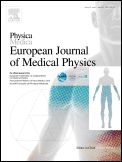
Physica Medica-European Journal of Medical Physics
Advancing the Frontiers of Medical PhysicsPhysica Medica - European Journal of Medical Physics is a premier peer-reviewed journal published by ELSEVIER SCI LTD, dedicated to advancing the field of medical physics. Established in 1989 and serving as a critical platform for innovative research, this journal covers a broad spectrum of topics within biophysics, radiology, and imaging sciences, consistently ranked in the Q1 category across these disciplines. With an impressive impact factor that highlights its influence within the scientific community—ranking 52/333 in Radiology, 42/243 in Physics and Astronomy, and 35/152 in Biochemistry—the journal is a valuable resource for professionals, researchers, and students aiming to contribute to the technological and methodological advancements in medical physics. Physica Medica is committed to fostering open dialogue and collaboration within the global medical physics community, although it currently does not offer open access options. The journal's extensive citation history and ongoing relevance underscore its importance in the continuous evolution of medical science.

COMPUTERIZED MEDICAL IMAGING AND GRAPHICS
Innovating the Intersection of Technology and HealthcareCOMPUTERIZED MEDICAL IMAGING AND GRAPHICS, published by PERGAMON-ELSEVIER SCIENCE LTD, is a leading international journal that has significantly contributed to the fields of medical imaging, graphics, and informatics since its establishment in 1988. With a remarkable reputation reflected in its Q1 quartile rankings across multiple categories—including Computer Graphics, Health Informatics, and Radiology—this journal maintains a prominent position in the academic community, evidenced by its Scopus rankings where it ranks in the top percentile across various disciplines. The journal aims to advance knowledge and innovation within the intersection of technology and healthcare, featuring high-quality research that addresses contemporary challenges in medical imaging and graphical methodologies. With no open access options currently available, this journal serves as a crucial resource for researchers, professionals, and students who are at the forefront of advancing imaging technology and its applications in medicine.